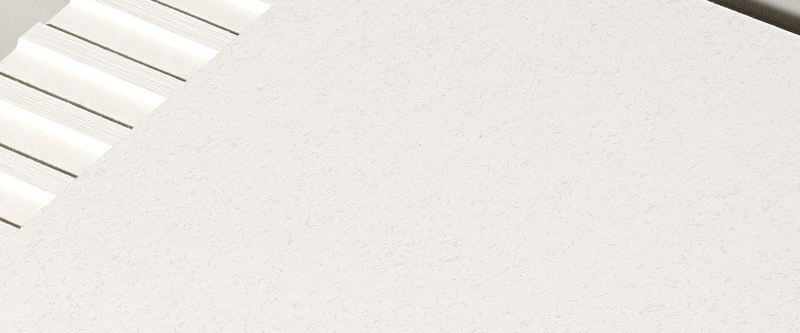Social housing in Ireland has traditionally been regarded as building rather than architecture, and it shows. Driving through the capital’s sprawling western suburbs is dispiriting. There is a bland and dreary sameness to what was built before we stopped building. Planned without ambition or vision, too many communities lack any recognisable sense of identity. The problems of Dublin’s suburbs were brought home to Seán Harrington almost thirty years ago. For his thesis in UCD in 1987, he worked closely with a community group in Castletymon in East Tallaght, cycling out to meetings every Thursday with a discussion model of the area packed into a suitcase strapped to his bicycle.

“Back then, the Square in Tallaght didn’t exist,” he says. “There were four pubs and three newsagents for a population of 80,000. It was a model of how not to go about urban development, banishing poor families to low-density suburbs where housing leads the way and services follow later.” What came out of his thesis were ideas about improving the social and economic viability of neighbourhoods by increasing the density of existing housing areas, building up corner sites and providing mixed uses locally – ideas whose time finally arrived, if only briefly, a generation later.
Harrington worked in England with Royal Gold Medallist, Edward Cullinan, who is renowned for his devotion to the art of building. Back in Dublin, he was Gilroy McMahon’s project architect for an apartment block on Essex Quay, next to Sunlight Chambers in Temple Bar. Despite the obvious connections between Essex Quay and Balgaddy, “You need to do it yourself,” says Harrington. “Developing a language of architectural expression is hard and risky but you’ve got to try.”

His approach to social housing is “based on an age-old pattern language.” Pattern language is a concept popularised by Christopher Alexander. Based on the observation that most of the wonderful places of the world were not made by architects but by ordinary people, Alexander catalogued a network of more than 250 patterns – or generic design solutions – at different scales, ranging from the ideal distribution of towns to choosing climbing plants and installing paving with cracks between the stones. The aim of a pattern language is to create identity, local distinctiveness and a sense of place that will stimulate individual wellbeing and local community pride.
A century ago, Raymond Unwin, who designed the first garden city, at Letchworth, and the garden suburb of Hampstead, brought similar ideas to the new discipline of town planning. Unwin stood for spatial enclosure and against vistas. He favoured a picturesque arts-and-crafts mode of design, with continuous public space manipulated by the solidity of buildings. He had a concern for visual pleasure. His emphasis on proportion, outline and richness of detail, as well as space, visual scale, contour and character, established a pattern language of town planning that was adopted and employed with intelligence at Balgaddy, which also bears affinities to the plainer mid-century Bord na Móna towns planned by Frank Gibney.

The public face of the scheme of 84 local authority houses for South Dublin County Council – half of them having three bedrooms, with the remainder having one, two or four bedrooms – is a three-storey, south-facing crescent, split in the middle. “We found it challenging to make a three-storey scheme, rather than the traditional two-storey solution, as the footplate of each house is so small,” says Harrington. “But we had to do it because there is no sense of place out here, only acres of two-storey housing and no enclosure. Without spatial events to stimulate your memory, you can’t have any sense of where you are.” The crescent is an event. Sitting rooms are on the first floor and have balconies, to benefit from sunlight, while kitchens connect to north-facing gardens. The depth of the crescent is adjusted – deep at ground level and shallow at attic level – to reduce overshadowing of the gardens.
The crescent was proportioned to work at two scales. On the one hand, it is a unified set piece, not unlike the palatial Georgian mansions of Bath: the entire scheme is wrapped in a robust base of Flemish-bond brickwork, while additional continuity comes from the sweeping fibre-cement roof and the multicoloured fibre-cement recessed attic beneath the eaves. On the other, each family’s home also reads individually: this is the role of the chimney stacks, marking pairs of houses, and, projecting from the continuous white façades, individual balconies, the “sticks” of which overlap at the corners, like in an old-fashioned architect’s working drawing.
“I enjoy making connections,” says Harrington. “It comes from my work for Ted [Cullinan], who took it from Gerrit Rietveld,” the Dutch cabinet maker and architect, one of the founders of the 1920s art movement known as de Stijl, which employed in its compositions a combination of planes and sticks. “When the budget restricted us to straightforward materials, we concentrated on making nice edges,” says Harrington. “Just like a nice tie can often dress a cheaper shirt.” It’s never simply a matter of cost. Even modest materials can be composed to create a work of art.


Architect: Howley Harrington Architects 1999 – 2004
Location: Housing at Balgaddy, North Clondalkin, Co. Dublin
Photography: Copyright Davison & Associates, courtesy of Seán Harrington Architects
Curated By: Shane O'Toole
Feeling inspired? You can enjoy more Building of Month articles curated by Shane O'Toole by clicking below.

